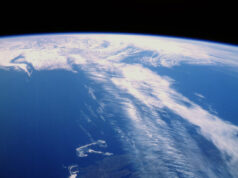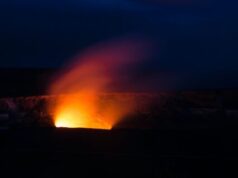The Ocean Cleanup concludes first-ever reconnaissance flight over ‘Great Pacific Garbage Patch’
The Ocean Cleanup, the Dutch foundation developing advanced technologies to rid the oceans of plastic, today presented the initial findings of its Aerial Expedition — a series of low-speed, low-altitude flights across the Great Pacific Garbage Patch, the plastic accumulation zone between Hawaii and California. Using a modified C-130 Hercules aircraft, expert spotters, and an experimental array of plastic scanning equipment, the expedition aims to accurately measure the biggest and most harmful debris in the ocean. This is an essential milestone in preparation for the cleanup of the patch, scheduled to begin before the end of the decade.
This first-ever aerial survey of floating ocean plastic provided confirmation of the abundance of plastic debris sized 0.5 m/1.5′ and up. While the flight plan took us along the Northern boundary of the patch, more debris was recorded than what is expected to be found in the heart of the accumulation zone. Initial estimates of the experienced observer crew indicate that in a span of 2.5hours, over a thousand items were counted.
For the development of a cleanup technology, it is essential to understand the problem, specifically the dimensions of the individual objects and the plastic accumulation as a whole. The nature and amount of the debris determine the design of cleanup systems, the logistics of hauling plastic back to shore, the methods for recycling plastic, and the costs of the cleanup.
The quest to answer this question started in August 2015, when The Ocean Cleanup’s fleet of about 30 vessels crossed the patch simultaneously in an operation named the Mega Expedition. On their crossing wide range of debris sizes were sampled, producing the first high-resolution map of the patch. By using sampling nets that were 80x larger than conventional scientific measurement tools, it was discovered that the amount of large debris was heavily underestimated.
The Mega Expedition successfully measured plastic up to 0.5m/1.5′ in size, but there were signs of a significant mass of plastic even larger than that. This includes “ghost nets” — discarded fishing nets many meters in diameter, which are notorious for ensnaring sea life and ship propellers. To accurately quantify those and other very large debris, a much larger area must be covered, which lead to the launch of the Aerial Expedition. For every 5 minutes of flight the same ocean surface area is scanned that was covered by the entire Mega Expedition in 2015. This increase in survey area enables the quantification of the largest pieces of trash in the ocean, resolving the last piece of this puzzle.
Once all exploration flights are finalized later this week, the results from the Aerial Expedition will be combined with the data collected during the 2015 Mega Expedition in a peer-reviewed scientific paper expected to be published early 2017.
Find your dream job in the space industry. Check our Space Job Board »
Founded in 2013 by then 18-year-old Boyan Slat, The Ocean Cleanup now employs approximately 50 engineers and researchers. The foundation is headquartered in Delft, The Netherlands.
Instead of going after plastic debris with vessels and nets – which would take many thousands of years and billions of dollars to complete – The Ocean Cleanup is designing a network of extremely long floating barriers that will remain stationary in the water, enabling the ocean to concentrate the plastic using its own currents.
Source: The Ocean Cleanup










